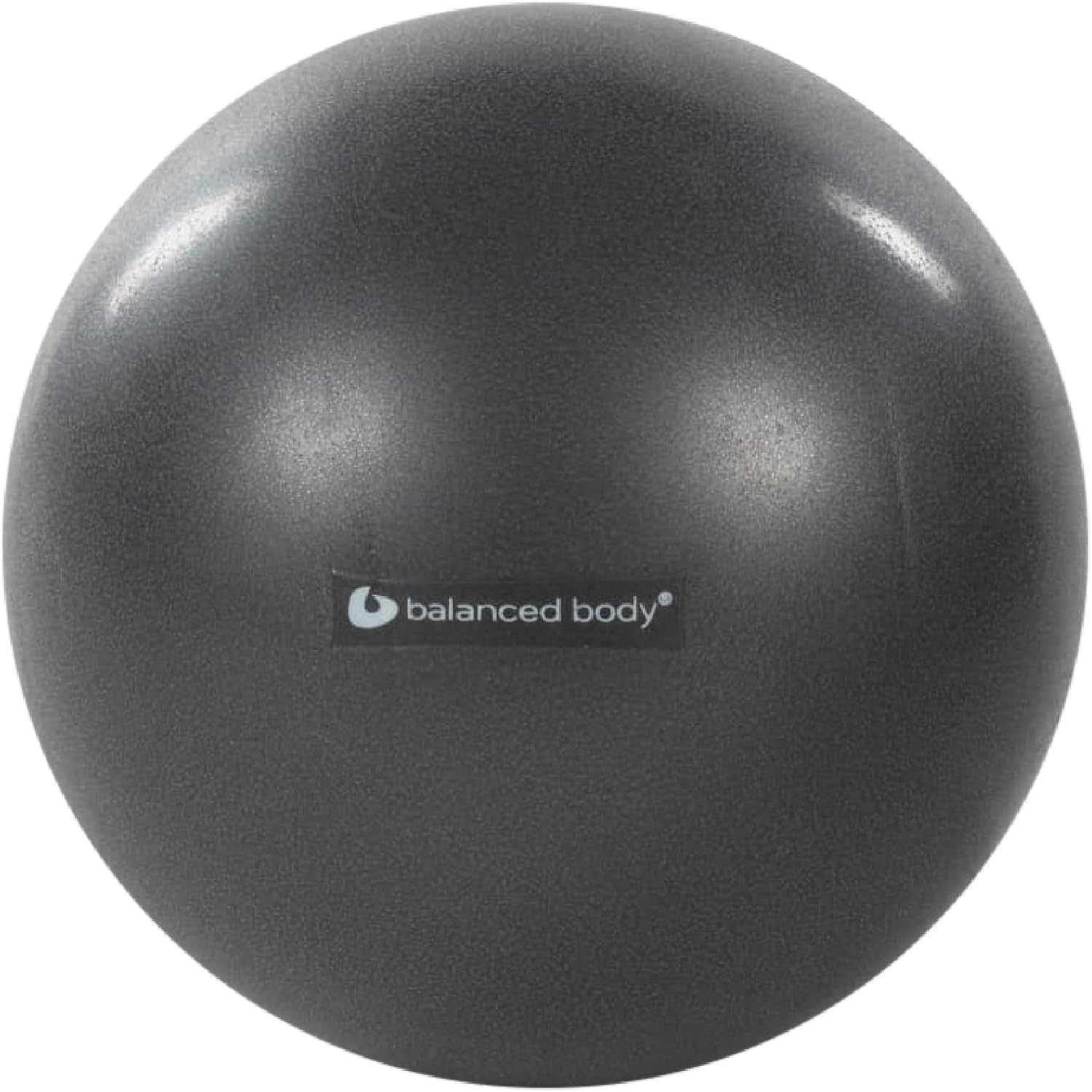A physical therapist says three stretches will help to loosen your tight lower back
If you sit for hours, try these simple movements
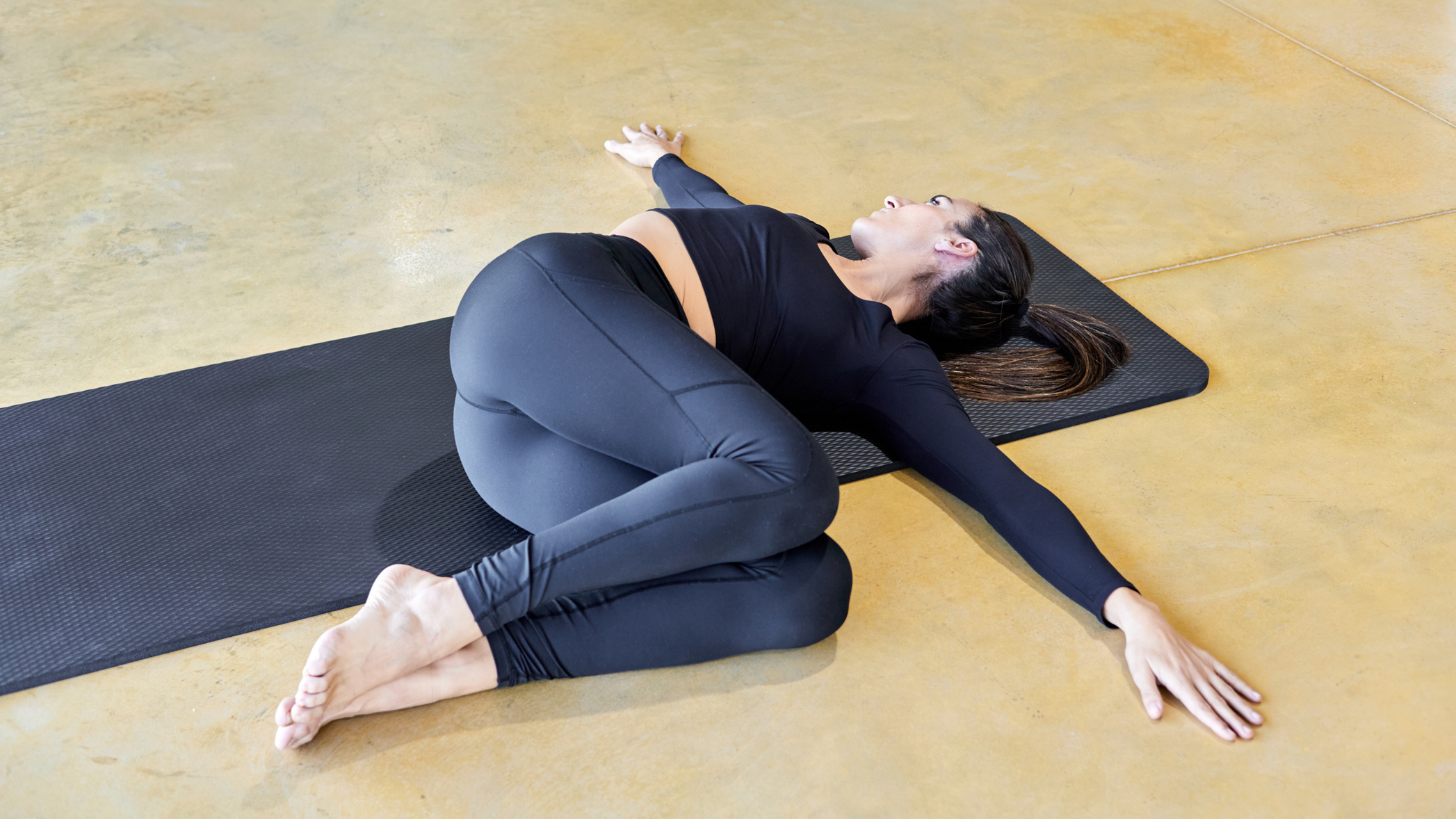
The way we work, travel and entertain ourselves nowadays means it’s little wonder so many of us experience soreness or stiffness in our lower backs.
“There are a lot of culprits when it comes to tension in the back,” says Carrie Lamb, a physical therapist, educator at Balanced Body and Pilates instructor at Connect Physical Therapy and Pilates.
“Some of the common culprits include computer work, looking down at a phone or screen, spending a lot of time sitting and doing prolonged work with the arms out in front of the body,” she says. Another cause of a stiff lower back is tightness in the thoracic spine (mid-back), according to Lamb.
“Think of the spine like a giant spring meant for shock absorption,” explains Lamb. “A tight thoracic spine is like having a kink in the spring. The lower neck and the lower back both bear the brunt of a stiff thoracic zone.”
Three stretches for lower-back tightness
Lamb has suggested three movements, all done on the floor, to release tension in the mid-back. (If you are unable to get up and down from the floor, see if these chair stretches are more suitable for you.)
You will also need a Pilates ball for two of the movements. A Pilates ball is an affordable and worthwhile addition to any home. It’s especially helpful for building core strength, something that can help to address back aches and pains, too.
If you have osteoporosis, Lamb recommends caution when stretching, particularly twisting stretches, like the side-lying rotation below, and deep forward bends.
Start your week with achievable workout ideas, health tips and wellbeing advice in your inbox.
“There are also quite a few organs that refer pain to the thoracic area, so if someone is feeling tightness along with other symptoms such as shortness of breath, chest pain, nausea—they should consult with a physician,” says Lamb.
“In general, it’s helpful to see a professional if you have persistent tightness that has not responded to a short trial of stretching to help further diagnose where the tightness is coming from.”
1. Thoracic extension over ball
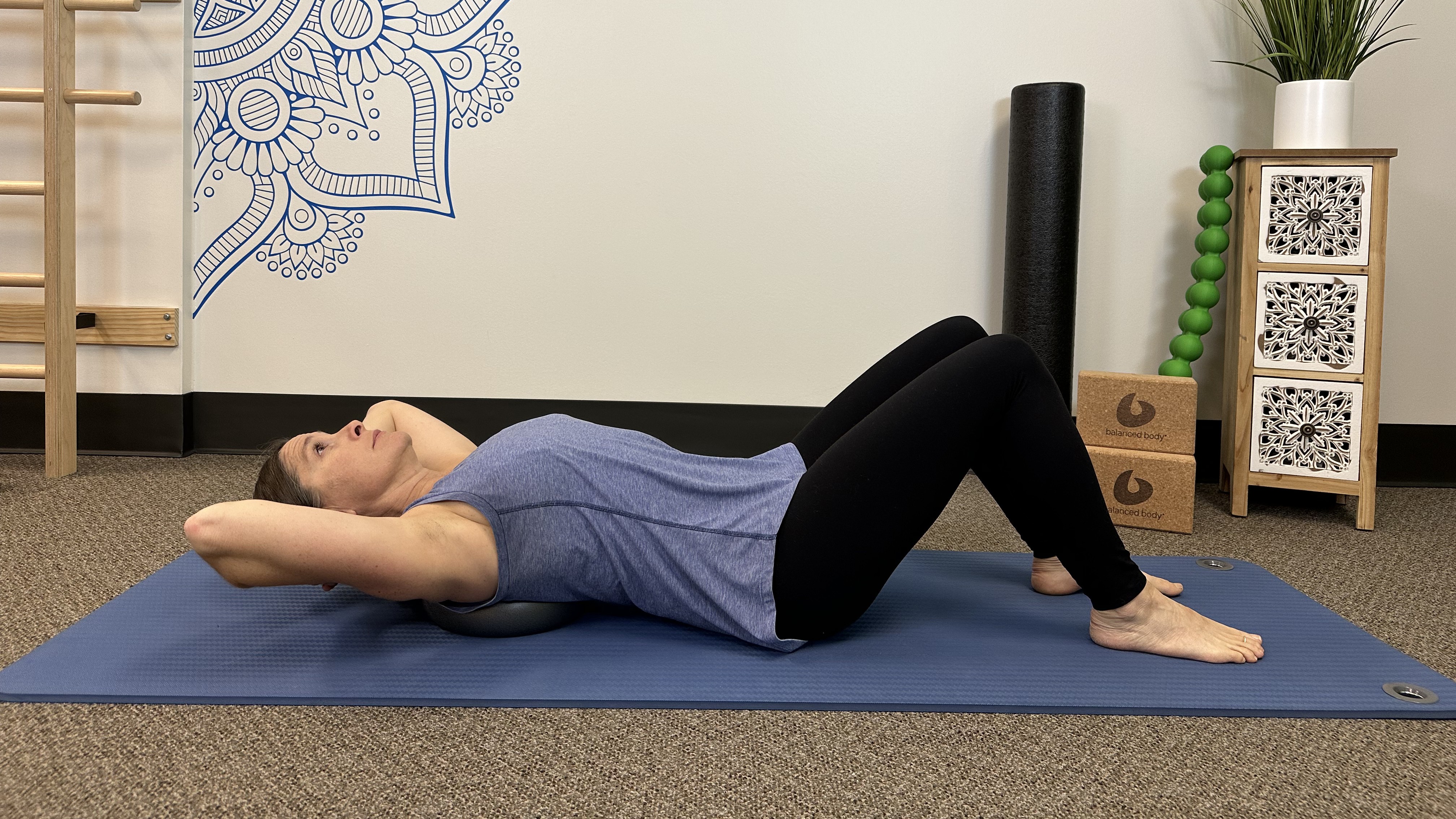
Reps: 5-8
- Lie on your back with a soft ball (8"-10") under your mid-back, with your knees bent, your feet flat on the floor, your hands behind your head and your elbows out to the sides.
- Inhale as you lean your head back to gently touch the floor.
- Exhale as you return to the starting position.
Progression: As you lean back, lift your hips and push through your feet to move back and forth over the ball.
2. Side-lying rotation
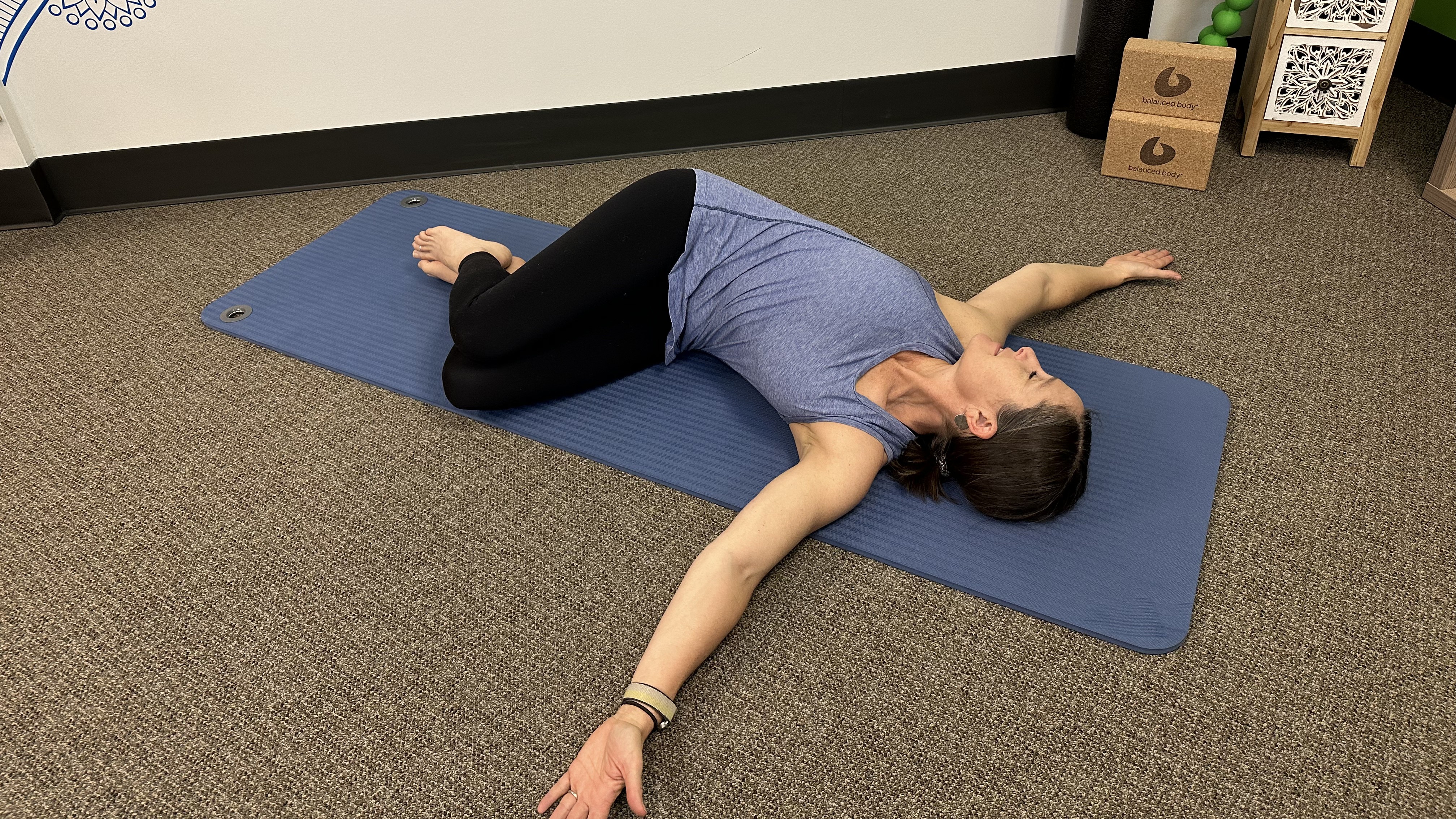
Reps: 5-8 each side
- Lie on your left side with your knees in front of you and bent at roughly 90°, arms outstretched and palms together.
- Keeping your hips and knees stationary, reach your right arm up and over to rest on the floor behind you, rotating your torso to the right.
- Pause, then return to the start. Hold the stretch for longer on the final rep, breathing deeply.
- Complete all the repetitions on one side, then swap sides.
3. Prone extension with ball
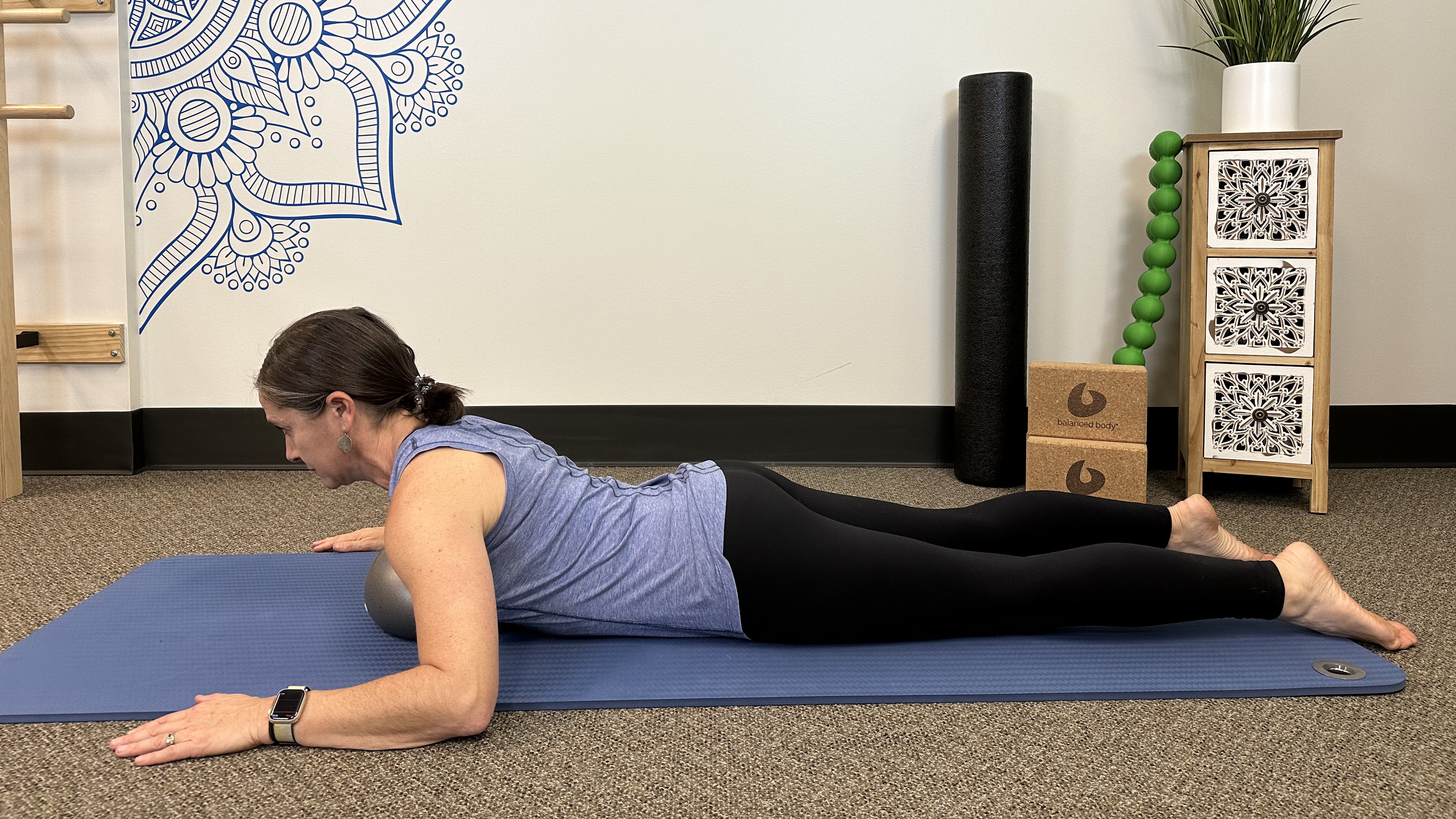
Reps: 5-8
“The use of a ball here helps the body understand where you are asking it to move, as the middle back is an area that is often skipped in movement,” says Lamb. “If you don’t have a ball, imagine one there as you perform the same movement.”
- Lie on your front with a small, soft ball (8"-10") under your chest and place your forearms on the floor next to you.
- Inhale as you lift your chest—the ball should roll forward slightly.
- Exhale as you return to the start.

Lou Mudge is a Health Writer at Future Plc, working across Fit&Well and Coach. She previously worked for Live Science, and regularly writes for Space.com and Pet's Radar. Based in Bath, UK, she has a passion for food, nutrition and health and is eager to demystify diet culture in order to make health and fitness accessible to everybody.
Multiple diagnoses in her early twenties sparked an interest in the gut-brain axis and the impact that diet and exercise can have on both physical and mental health. She was put on the FODMAP elimination diet during this time and learned to adapt recipes to fit these parameters, while retaining core flavors and textures, and now enjoys cooking for gut health.
You must confirm your public display name before commenting
Please logout and then login again, you will then be prompted to enter your display name.

